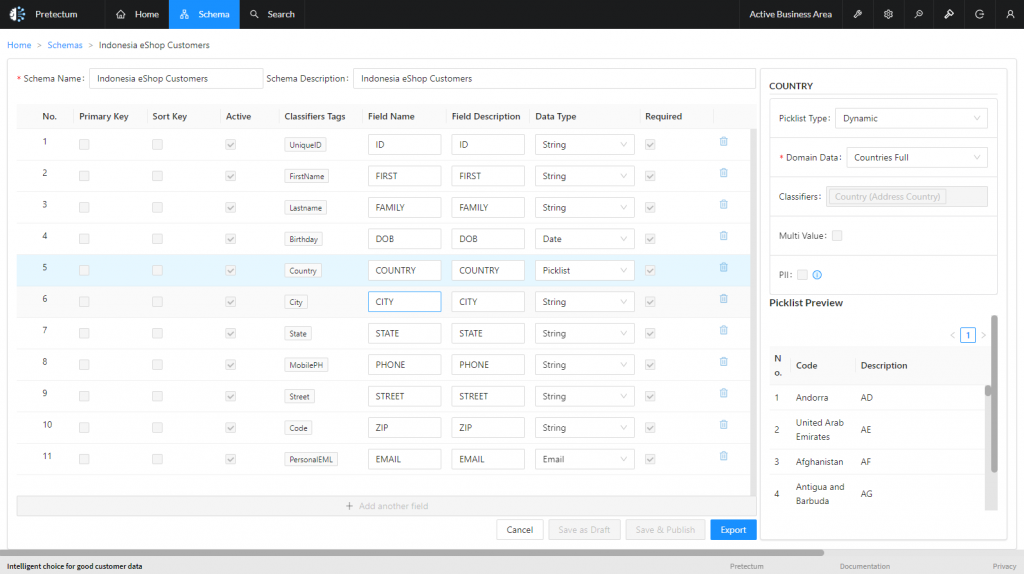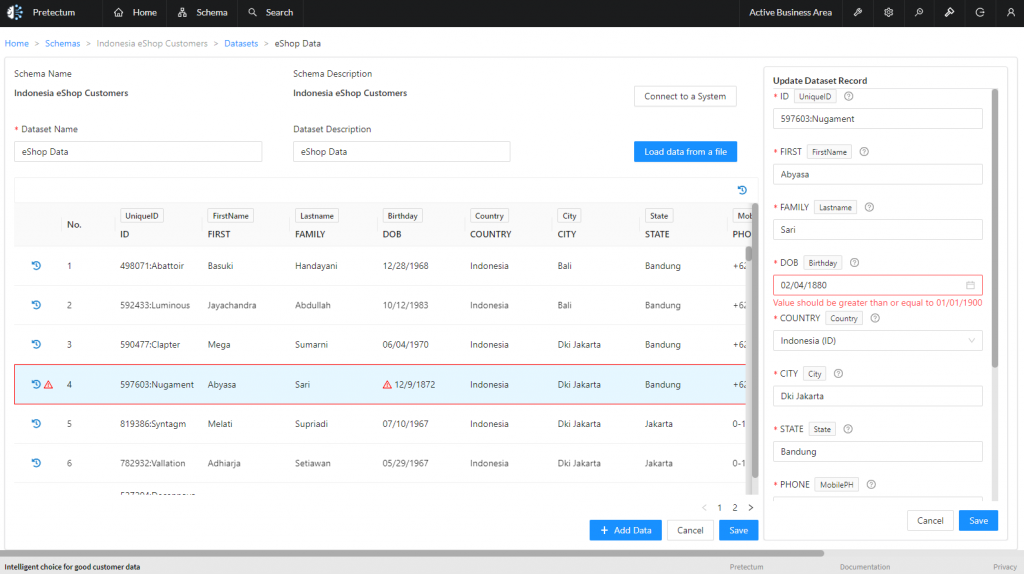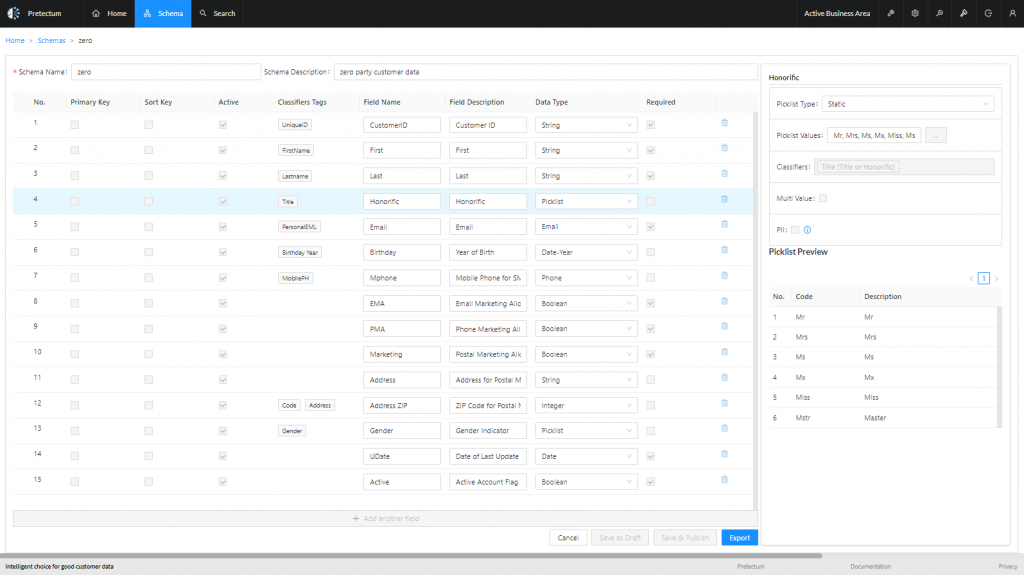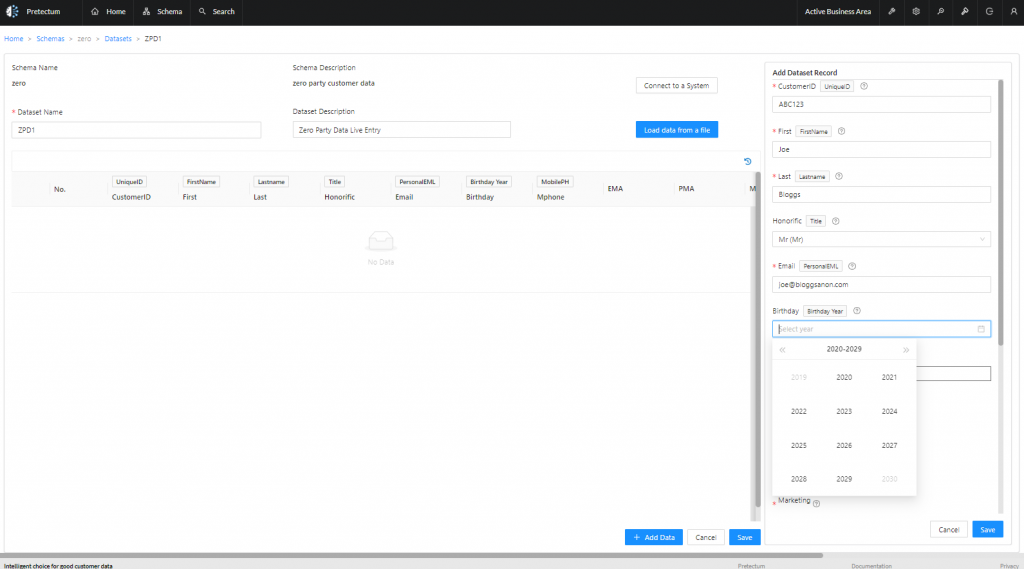Active data governance is a modern, agile approach that focuses on supporting the people in your organization who work with and create data.
Active data governance means data verification happens before data is entered into the system, typically as soon as the data is collected. This helps ensure the veracity of data and that data quality meets the standards of the organization.
Active data governance also ensures that data meets quality standards as soon as it’s added to any accessible business database.
In the context of Customer Master Data Management (CMDM), active data governance plays a crucial role as it ensures the accuracy, consistency, integrity, and security of an organization’s master data. Here’s why active data governance is so important in CMDM.
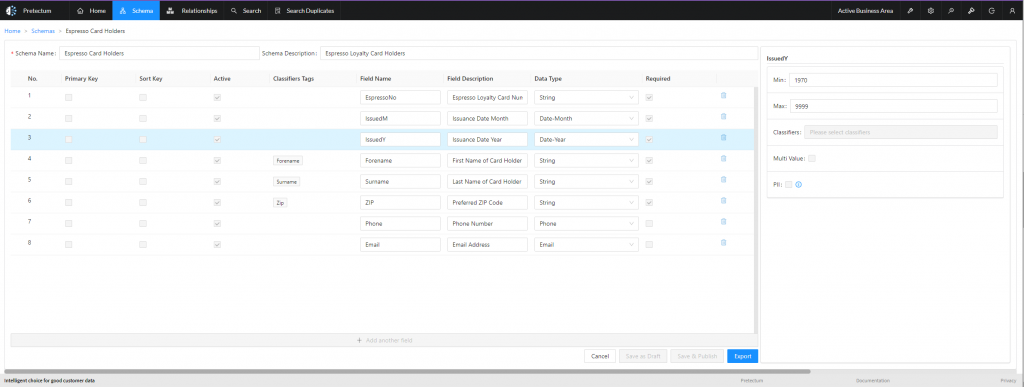
Pretectum CMDM does this at three levels, first through the data entry screens, through bulk imports, and API interactions. The key to data verification is the way that you set up your customer master data schema.
Active customer master data governance ensures the accuracy of Master Data, establishing business data rules and processes for data quality management, and defining standards, validation techniques, and guidelines for data entry.
By enforcing these standards, organizations can ensure that customer master data is accurate and reliable.
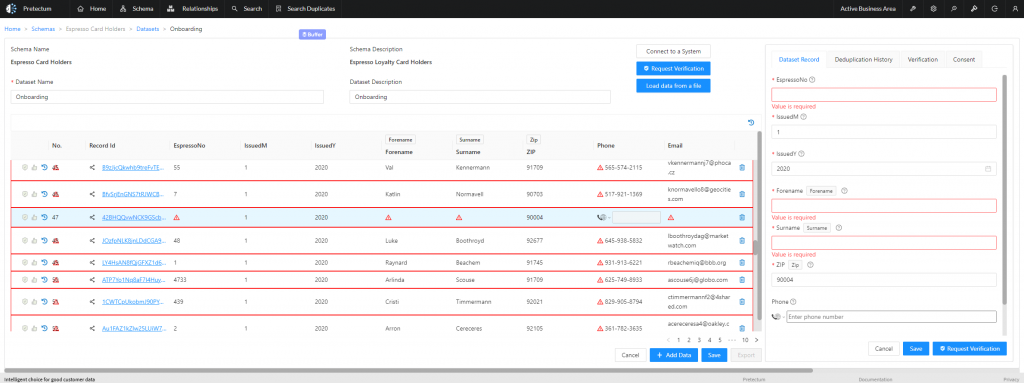
Active customer master data governance promotes consistency in Customer Master Data by providing guidelines for data standardization, naming conventions, and business rules. By establishing common data definitions and formats, data governance ensures that master data is consistent across different systems and departments.
This approach maintains the integrity of customer master data by defining roles, responsibilities, and access controls to ensure that only authorized individuals can access and modify master data. By implementing data governance practices, organizations can prevent unauthorized modifications and data tampering, and protect against data corruption. Pretectum CMDM achieves this through a matrixed Role Based Access Control (RBAC) model.
Active customer master data governance addresses the security of your customer master data through established protocols for data protection, privacy, and compliance with regulatory requirements. Data governance ensures that sensitive information is appropriately secured, and access to master data is controlled based on user roles and permissions.
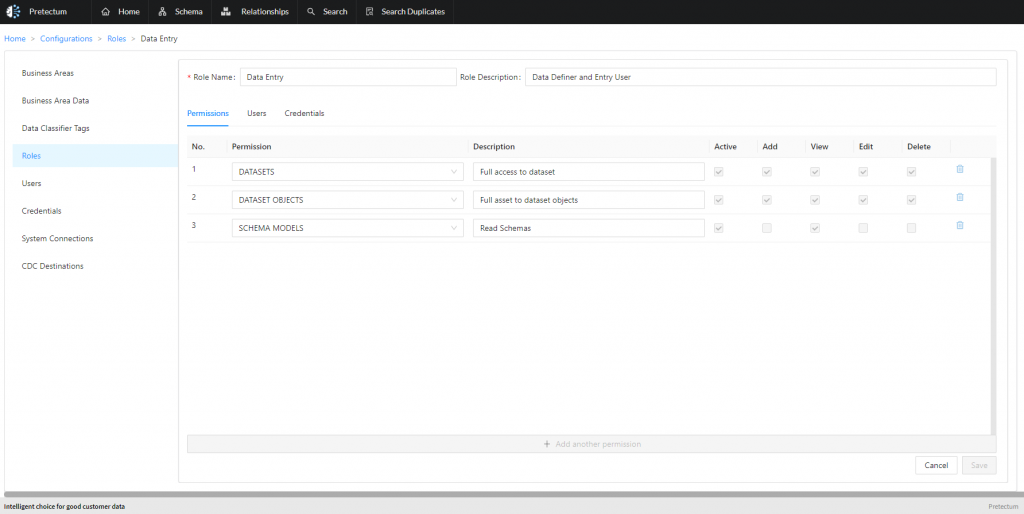
Active customer master data governance also facilitates improved decisions since customer master data serves as the foundation for strategic customer portfolio business decisions. By implementing data governance practices, organizations can improve data quality, consistency, and integrity, providing a reliable basis for analysis and decision-making, personalization, and customer interaction.
Active data governance is an integral part of Pretectum CMDM’s approach to customer master data management, ensuring the quality, consistency, integrity, and security of your customer master data, thereby facilitating better decision-making and operational efficiency.
In a passive CMDM system, these practices would be implemented in a way that minimizes active data manipulation, instead, the focus is on the passive collection and integration of data from various sources.
A passive approach can help ensure data accuracy and consistency, while also reducing the need for manual data management tasks. However, it’s important to note that passive CMDM still requires robust data governance and quality assurance processes to ensure the reliability of the data.
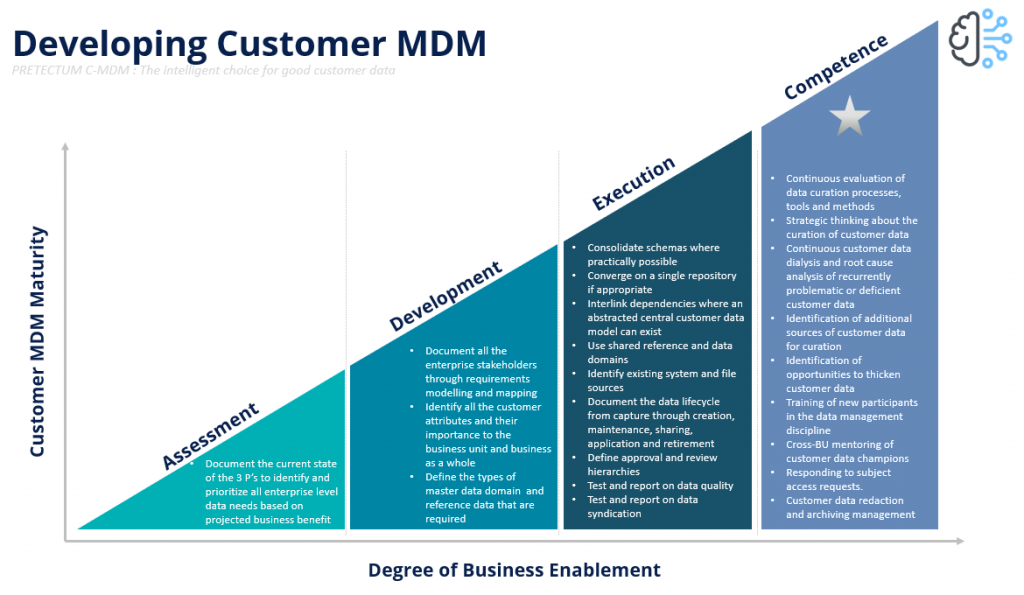
In considering what is best for your organization, you need to consider several factors.
The first consideration is the relative maturity of data governance processes and data management organization within your business. Highly disparate systems with siloed ownership may lend themselves more to a passive data governance model.
Pretectum CMDM can support that federated approach to customer master data management. If the organization also has limited resources for data management, passive data governance can be a cost-effective solution as it requires less active management.
Another consideration might be the sheer volume of data. Active Customer Master Data Management (ACMDM) requires a good deal of manual interception of data issues. Where the data is sourced from other systems or organizations, applying ACMDM may be a tough ask relative to the needs of the business. If the underlying systems providing the data are reliable and produce high-quality data, passive data governance can be an effective approach.
Batched and bulk processing of customer master data may be the way to go. Either way; the Pretectum CMDM provides you with a postmortem on captured data and guides you to the customer master data that fails to meet your business data governance rules as defined.
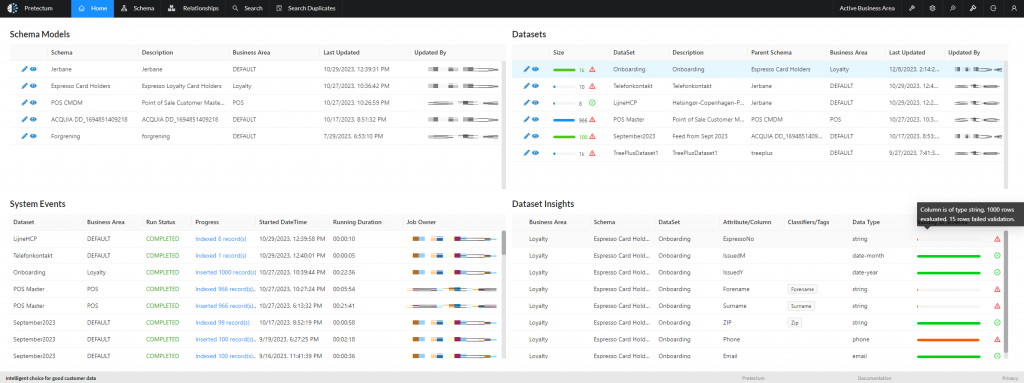
Passive customer data governance can also be beneficial when dealing with complex data structures or data from multiple sources, as it can automatically reconcile discrepancies and ensure consistency.
In some cases, regulatory requirements might favor a passive approach, especially when it comes to privacy regulations that limit the manipulation of certain types of data.
Consider also, the approaches to the implementation and adoption of CMDM.




